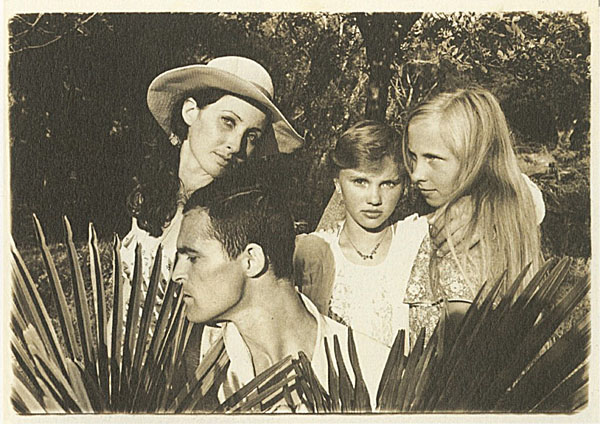Crimea: A No Man's Land
 © Boris Mikhailov
© Boris Mikhailov
About The Exhibition
Curator: Igor Manko
This exhibition is divided into four installments: documentary, staged and performance. conceptual and video. The combined sections include images, curatorial statement, information on the participating photographers and videos.
Editors note: This is an evolving exhibition with installments over time. Our feeling was that if VASA Exhibitions published all the work at one time the viewer may lose the essence of each section. The VASA membership will receive notices on installment updates.
Crimea: A No Man's Land is a new VASA exhibition that shows Crimea-based photo and video work by Ukraine artists. The 2014 annexation banned most Ukrainians from visiting the peninsula and forced many of the locals to leave it. Once a place where countless images were taken and shaped into numerous art projects, Crimea is now out of reach for the artists from continental Ukraine and unavailable for their reflections and critical comments on the 2014 – 2016 events. Meanwhile a recent Russian internet-based “Another Crimea” project, featuring images of the occupied territory by leading Russian and European photojournalists, has started discussion challenging its objectivity and obscure funding sources. Covering the period from the Soviet times (1980s) to today, including projects by “visiting” artists, local Crimean artists, and those living “in exile” on the continental part of Ukraine, this project is an attempt to repossess the annexed territory by means of art. |
|
Новый выставочный проект Crimea: A No Man's Land на VASA Exhibitions представляет фото- и видео-работы украинских авторов, посвящённые Крыму. Представляя работы, сделанные в Крыму и/или о Крыме с советского времени до сегодняшнего дня, выставка Crimea: A No Man's Land является попыткой вернуть Крым на арт-территорию Украины.
|
© Igor Manko, 2016
Related links to Crimea: (links open in a new tab)
Photojournalism and Manipulation by Jörg M. Colberg
Whose Crimea: Photographers Are Divided on Another Crimea Project.
Discussion in English
Discussion in Russian
The links to Crimean works in the VASA Kharkiv School of Photography Exhibition
• 20 Sunsets of 1986 by Oleg Malevany
• 36 Views of Mount Karadag by Vladimir Starko
• Crimea 2002 by Victor Kochetov
• The Sea by Igor Chursin
• 100 Views of Mount Karadag by Igor Manko
_______________________
On VASA Exhibitions:
VASA Exhibitions over the years have provided a platform for individual and group exhibitions, collaborative exhibitions with various organizations and galleries and exhibitions that follow a particular theme or inquiry such as “Where Do We Go Now” curated by Rui Cepeda and the “Kharkiv School of Photography: Soviet Censorship to New Aesthetics” curated by Igor Manko.
VASA Exhibitions are international and multicultural. The curatorial team has strived to present work that not only represents the photographers but also the social, historical and cultural. As an online international project, VASA works to engage various digital tools. Video, as an example, not only offers the potential for the presentation of works, it provides the opportunity and framework for the voice of the author to be seen and heard. Through image, text, sound and animation, VASA works to expand the exhibition paradigm and provide a rich experience for the viewer (as well as the author).
VASA Exhibitions provides a viewing and research environment by archiving all of the exhibitions in their entirety. For example, the viewer may view a 2009 exhibition as it was presented and not just traces of its existence.
VASA Exhibitions includes video and video series, and sound works.